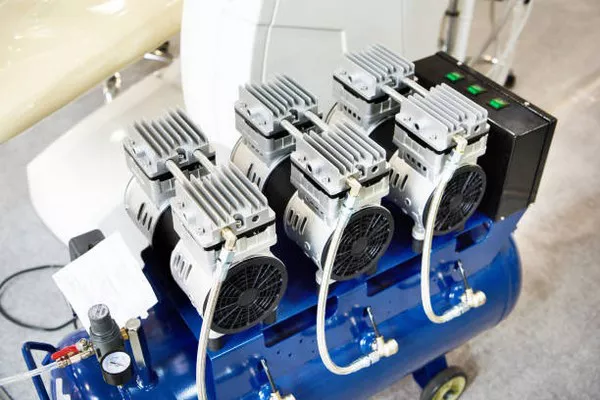When embarking on a painting project, whether for personal home improvement or professional contracting, selecting the appropriate tools is crucial for achieving a smooth, efficient finish. Among these tools, the air compressor plays a pivotal role in providing the necessary power to operate pneumatic paint sprayers effectively. Understanding what type of air compressor you need for painting involves considering several factors, including compressor specifications, paint sprayer requirements, and the scale of your painting projects.
Understanding Air Compressor Basics
An air compressor is a device that converts power (usually from an electric motor, diesel engine, or gasoline engine) into potential energy stored in pressurized air. This compressed air is then used to power various tools and equipment, including pneumatic paint sprayers. When it comes to painting, the key considerations for an air compressor are its capacity (measured in cubic feet per minute, CFM), pressure (measured in pounds per square inch, PSI), and tank size.
CFM Requirements for Paint Sprayers
CFM is one of the critical specifications to understand when selecting an air compressor for painting. Different pneumatic paint sprayers require varying CFM levels to operate optimally. Typically, paint sprayers will specify their CFM requirements at a given PSI. For instance, a paint sprayer might require 4 CFM at 40 PSI. It’s essential to match or exceed these requirements to ensure continuous and smooth operation of the sprayer without interruptions or loss of pressure.
Determining PSI Needs
Pressure (PSI) is another crucial factor to consider. Most pneumatic paint sprayers operate effectively within a range of 25 to 50 PSI, although specific models may require higher pressures. The air compressor must be capable of maintaining a steady output of air at the required PSI to achieve consistent paint application. Additionally, some paint sprayers allow for adjustable pressure settings, providing flexibility in application techniques and paint viscosity.
Tank Size and Duty Cycle
The tank size of an air compressor affects its duty cycle—the amount of time it can run continuously before needing to refill with compressed air. Larger tanks generally have longer duty cycles, which can be advantageous for larger painting projects that require continuous operation without frequent pauses for the compressor to refill. However, for smaller-scale projects or intermittent use, a smaller tank size may suffice, provided the compressor can still meet the CFM and PSI requirements of the paint sprayer.
Types of Air Compressors
Several types of air compressors are available, each with its advantages and ideal applications for painting projects:
Pancake Compressors: These compact, portable compressors are ideal for smaller painting jobs or DIY projects where mobility is essential. They typically have smaller tank capacities but can still provide sufficient CFM and PSI for most household paint sprayers.
Single-Stage Compressors: Commonly used in workshops and smaller commercial settings, single-stage compressors provide moderate CFM and PSI ratings suitable for medium-sized paint sprayers and intermittent use.
Two-Stage Compressors: Designed for heavy-duty applications, two-stage compressors offer higher CFM and PSI ratings, making them suitable for large-scale painting projects or continuous industrial use. They are more efficient in providing higher volumes of compressed air over extended periods.
Oil-Free vs. Oil-Lubricated Compressors: Oil-free compressors are generally preferred for painting applications because they eliminate the risk of oil contaminating the paint. They also require less maintenance. However, oil-lubricated compressors tend to be quieter and may have longer lifespans if properly maintained.
Factors to Consider When Choosing
When selecting an air compressor for painting, consider the following factors to ensure it meets your specific needs:
Project Scale: Determine whether your painting projects are small, medium, or large-scale. This will influence the required CFM, PSI, and tank size.
Portability: If you need to move the compressor frequently between job sites or around a workshop, consider a lightweight and portable model.
Power Source: Choose between electric-powered or gas-powered compressors based on availability of power sources at your job sites and portability requirements.
Noise Level: Especially important for indoor projects or noise-sensitive environments, consider the noise rating of the compressor to ensure it meets acceptable levels.
Maintenance Requirements: Factor in the ongoing maintenance needs of the compressor, including oil changes, filter replacements, and overall longevity.
See Also THE QUIETEST AIR COMPRESSORS
Conclusion
Selecting the right air compressor for painting involves a careful assessment of your specific project requirements, including CFM, PSI, tank size, and compressor type. By matching these factors to the specifications of your pneumatic paint sprayer and the scale of your painting projects, you can ensure efficient, consistent results without compromising on performance or quality. Whether you’re a homeowner tackling a weekend DIY project or a professional contractor handling large-scale painting jobs, choosing the appropriate air compressor is a crucial step toward achieving a flawless finish and maximizing productivity.

